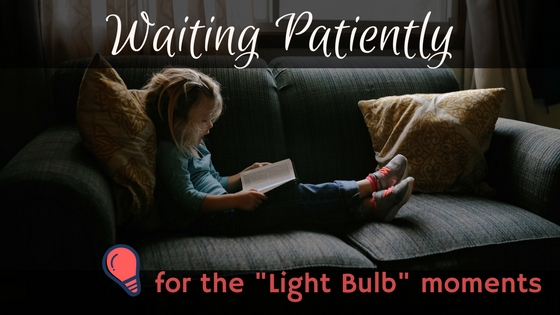I had an Iowa State University degree in child development with emphasis on pre-school and kindergarten. How was it, then, that my daughter could not read in kindergarten or
first grade?
She had a good basic understanding of phonics and had picked it up very quickly, but when I put the word “cat” in front of her, she would say, with deliberate phonetic enunciation, “That says kuh-a-tuh.”
WAITING PATIENTLY
Long after other children her age were smoothly sounding out words and starting to read, my daughter remained at that same stagnant level, mechanically breaking words into disconnected letter sounds.
Then, one morning, while we were on vacation at the family’s cottage, she woke me up at 6:00 a.m. to ask if the box on the dresser said, “Queen Bed Set.”
THE "LIGHT BULB" MOMENT
I was awake in an instant, ecstatically doing the happy dance!
It had clicked for her! Apparently her brain was finally ready to blend the phonetic sounds. She not only read every billboard we passed as we journeyed home from vacation, but, in that 2nd grade year of school, she progressed from “kuh-a-tuh” to reading adult classic literature.
PATIENCE HAS ITS REWARDS
She has loved to read and learn ever since that day.
I am so glad I had read Dorothy and Raymond Moore’s Better Late than Early. It encouraged parents to NOT push or worry. Every brain develops uniquely at its own pace and in its own unique way.
I was so thankful I had chosen to homeschool her. If she had been attending school, she would likely have been placed in the remedial reading group.
Because of my no-push approach, she had no clue that she was “behind” and, to this day, has no self-image issues due to it.
If you have a “stagnant learner,” take heart. Wait patiently for the “light bulb” moment.
Polly Lilly and her husband, Dan, successfully homeschooled their four now-adult children and are currently NICHE board members. Polly is the Homeschool Iowa support group and regional representative coordinator, and she also has a speaking and counseling ministry.

